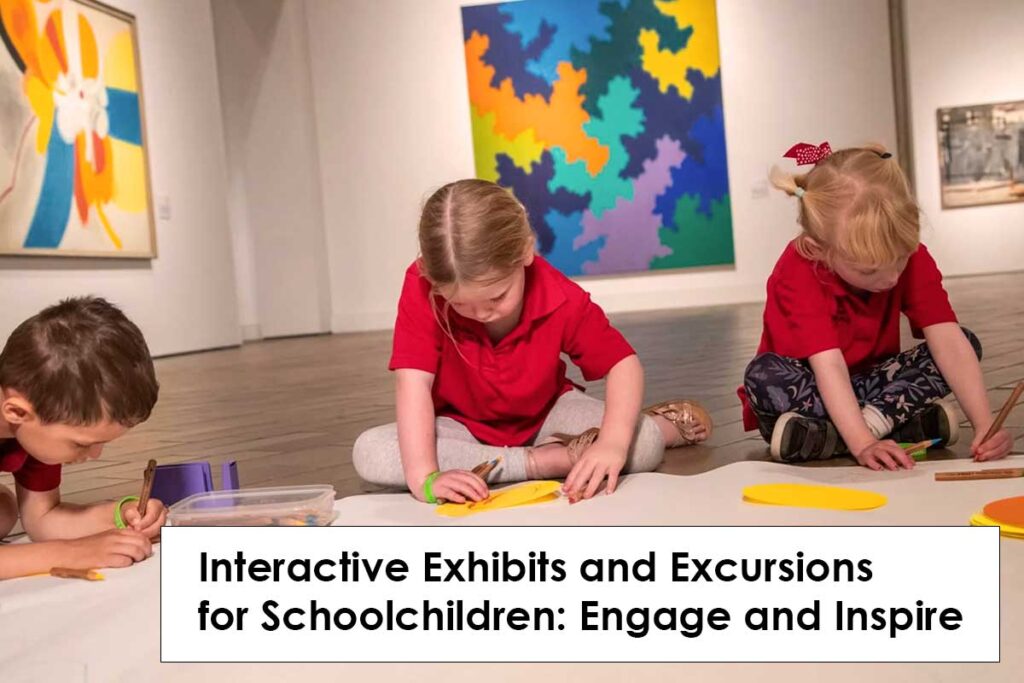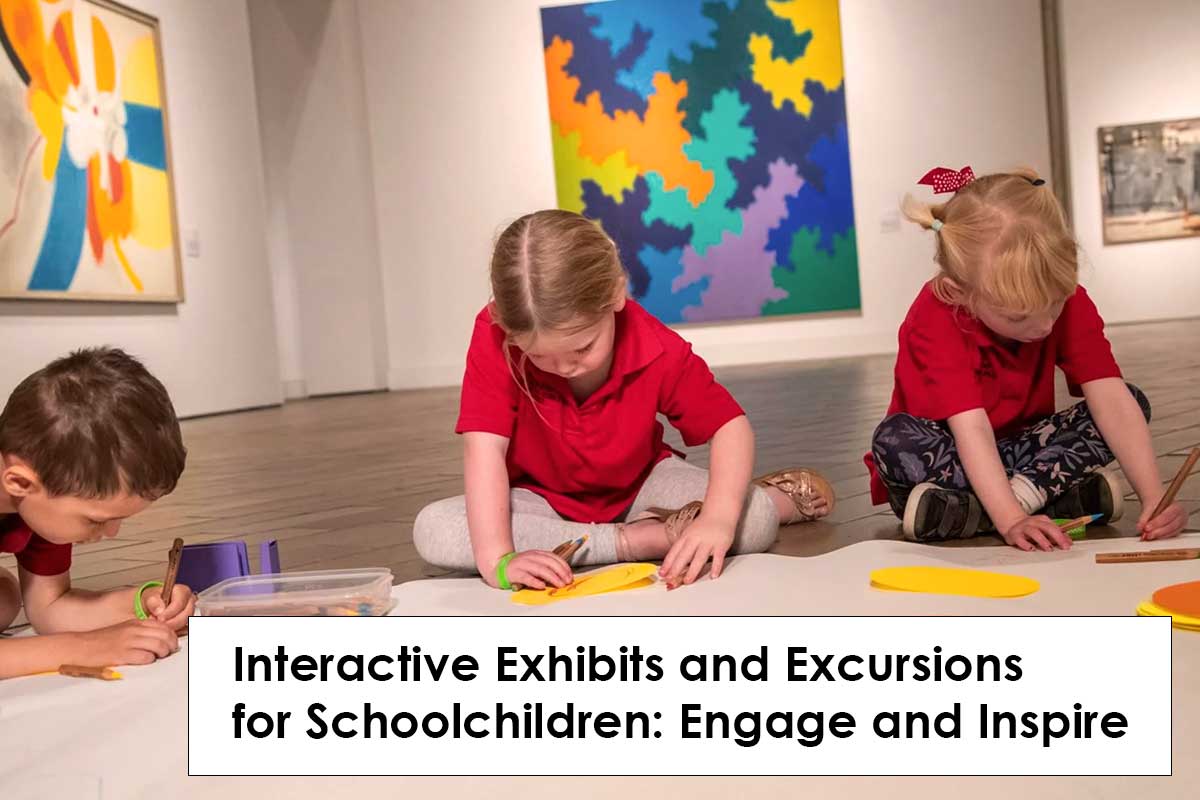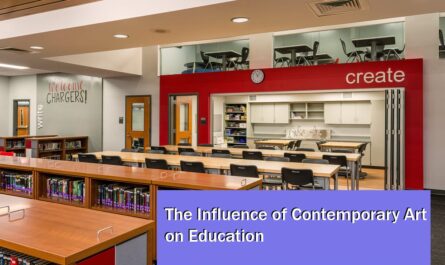
Teaching strategies are adjusting in the always shifting terrain of education today to incorporate more interesting and practical learning opportunities. Interactive exhibits and excursions catered to their needs provide one approach to involve schoolchildren.
These amazing encounters can tremendously improve learning by turning abstract ideas into something real and interesting. Here we explore the benefits of these educational trips, provide viewpoints from seasoned teachers, and provide doable tips for besting these possibilities.
Advantages of Interactive Learning Opportunities
For students, interactive exhibits and tours provide a wealth of advantages:
- Enhanced Engagement: Interactive elements capture students’ attention more effectively than traditional lectures. Hands-on activities and real-world applications of theoretical concepts foster deeper interest and curiosity.
- Multi-sensory Learning: These experiences engage multiple senses, which can aid in the retention of information. Visual, auditory, and kinesthetic elements work together to create a holistic learning environment.
- Real-world Connections: By stepping outside the classroom, students can see the practical applications of their lessons. This real-world context helps them understand the relevance of what they’re learning and can spark a passion for specific subjects.
- Collaboration and Communication: Excursions often require students to work together, fostering teamwork and communication skills. These collaborative experiences can be both enjoyable and educational.
Insights from Educators
We reached out to several educators who have successfully integrated interactive exhibitions and excursions into their curricula. Here’s what they had to say:
Mrs. Jane Smith, 5th Grade Teacher:
” My students had an unforgettable experience when they visited the nearby science museum. The interactive exhibits provided them with the opportunity to explore and apply physics principles that were previously confined to the pages of textbooks. The joy that filled their expressions when they made those connections was absolutely priceless.”
Mr. David Johnson, High School History Teacher:
” My students had an absolute blast when we visited the local science museum. It was an experience they won’t soon forget! The interactive exhibits provided them with the opportunity to playfully explore the fascinating world of physics, bringing to life the principles they had previously encountered only in textbooks. The sheer joy that spread across their faces as they made those connections was absolutely priceless.”
Interactive Learning Opportunities in Boston
Boston, rich in history and culture, offers a wealth of interactive learning experiences for schoolchildren. From historical sites to cutting-edge science museums, the city provides numerous opportunities for educators to create memorable and educational excursions. Here are a few examples of successful interactive learning activities in Boston.
Boston Children’s Museum
Example Activity: Interactive Science and Art Exhibits
Description: The Boston Children’s Museum offers a variety of interactive exhibits that blend science, art, and cultural education. Students can engage in hands-on activities like building structures, creating art, and exploring the principles of physics through play.
Case Study: Mrs. Emily Carter, a 3rd grade teacher, organized a trip to the museum focused on the “Science Playground” exhibit. Her students participated in activities that explained basic engineering principles through building and testing structures. Mrs. Carter noted a significant increase in her students’ understanding and interest in science topics covered in class following the trip.
Museum of Science, Boston
Example Activity: Engineering Design Workshop
Description: The Museum of Science offers workshops where students can engage in engineering challenges. They design, build, and test their projects, learning about engineering concepts in a hands-on environment.
Case Study: Mr. Steven Greene, a middle school science teacher, took his students to participate in an engineering workshop. The students worked in teams to build wind turbines and test their efficiency.
This practical application of theoretical knowledge reinforced their learning and enhanced their problem-solving skills. Mr. Greene observed that students were more enthusiastic about participating in class discussions and projects related to engineering topics afterward.
Freedom Trail and Historic Sites
Example Activity: Living History Tours
Description: The Freedom Trail offers guided tours that bring Boston’s revolutionary history to life. Students can visit key sites such as the Paul Revere House, the Old North Church, and the Boston Tea Party Ships and Museum.
Case Study: Ms. Laura Thompson, a high school history teacher, organized a Freedom Trail excursion that included a reenactment of the Boston Tea Party. Students participated in a hands-on reenactment, throwing mock tea into the harbor while learning about the event’s historical significance.
This immersive experience deepened students’ understanding of American history and made the learning process more engaging. Ms. Thompson found that students were able to recall historical facts more vividly and with greater detail during subsequent exams and class discussions.
New England Aquarium
Example Activity: Marine biology exploration
Description: Interactive displays and educational initiatives emphasizing marine life and conservation abound at the New England Aquarium. Touch tanks, marine life viewing, and guided tours explaining marine ecosystems let students interact.
Case Study: Mrs. Linda Hall, a biology teacher, brought her students to the aquarium for a field trip in marine biology. The students participated in a behind-the-scenes tour learning about marine animal care and conservation efforts, then interacted with marine life in the touch tank.
This trip matched their biology course by giving their studies on marine environments actual context. Students expressed a want to work in marine biology and showed more interest in environmental science subjects, Mrs. Hall said.
Using Boston’s abundance of educational resources, teachers can design powerful and interesting outside-of-class learning opportunities that help students to develop a greater respect of many disciplines.
| Excursion Site | Activity | Description | Learning Objectives | Pre-Visit Preparation | Post-Visit Activities |
|---|---|---|---|---|---|
| Boston Children’s Museum | Interactive Science and Art Exhibits | Hands-on activities in building, creating art, and exploring physics principles | Understand basic engineering concepts; Foster creativity | Provide background information on engineering principles and art techniques | Students create a project based on their favorite exhibit; Presentations on what they learned |
| Museum of Science, Boston | Engineering Design Workshop | Design, build, and test engineering projects like wind turbines | Apply engineering and problem-solving skills; Work collaboratively | Introduction to engineering concepts; Assign teams for the workshop | Team reflections on challenges and successes; Build a model using learned principles |
| Freedom Trail and Historic Sites | Living History Tours | Guided tours and reenactments at key historical sites | Deepen understanding of American Revolutionary history; Engage with historical events | Study key events and figures of the American Revolution; Discuss the significance of each site | Write an essay or create a presentation on the importance of a visited site; Class debate on revolutionary ideas |
| New England Aquarium | Marine Biology Exploration | Interactive exhibits, touch tanks, and guided tours about marine life and conservation | Learn about marine ecosystems; Understand conservation efforts | Overview of marine biology; Discuss the importance of conservation | Students research a marine animal and present their findings; Create a conservation project proposal |
Practical Tips for Organizing Excursions
To maximize the benefits of interactive exhibitions and excursions, consider the following tips:
- Coordinate with the Venue: Contact the educational coordinators at the venues to customize your visit to align with your curriculum. Many places offer tailored programs for school groups.
- Plan Ahead: Ensure that the exhibition or excursion aligns with your curriculum and learning objectives. Reach out to the venue ahead of time to understand what interactive elements are available and how they can be tailored to your educational goals.
- Prepare Pre-visit Materials: Provide students with background information and specific learning objectives to maximize their engagement and learning during the trip. Give your students an overview of what to expect. Providing background information and setting learning goals can help them focus and make meaningful connections during the experience.
- Prepare Students: Give your students an overview of what to expect. Providing background information and setting learning goals can help them focus and make meaningful connections during the experience.
- Incorporate Follow-up Activities: Plan post-excursion activities to reinforce what was learned. This could include discussions, projects, or presentations that encourage students to reflect on their experiences and apply their new knowledge. Plan activities after the visit to reinforce the lessons learned. This could include projects, presentations, or reflective essays.
- Engage Parents and Guardians: Keep parents informed about the educational value of these outings. Engaged parents are more likely to support and reinforce learning at home.
- Gather Feedback: After the excursion, solicit feedback from students about what they enjoyed and what could be improved. Planning next trips and making sure they are as powerful as they could be depend on this input, which is priceless.
Strong tools in the educator’s arsenal, interactive exhibits and excursions provide a dynamic approach to involve students and enhance their educational process. Teachers can design unforgettable and powerful learning opportunities that inspire inquiry and a love of learning by carefully organizing these visits and coordinating them with classroom activities.

